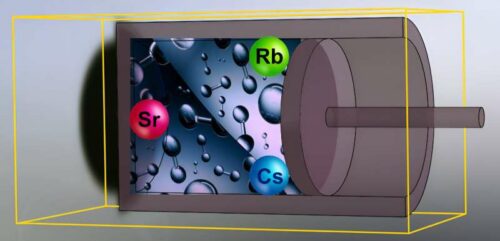This advancement could improve the hydrogen economy, offering a more efficient and safer method to harness this clean energy source for industrial applications.

Hydrogen is considered a key element for future energy needs because of its renewable production methods and its use in generating electricity and heat. Industries such as steelmaking, glass, cement, and chemicals could benefit from hydrogen energy. It could enhance international shipping and transportation by serving as an energy source that also helps stabilise the power grid by storing excess energy from renewable sources.
Researchers from Skoltech, with international collaborators from China, Japan, and Italy, and the Shubnikov Institute of Crystallography of the Russian Academy of Sciences, have developed a material that enhances hydrogen storage capabilities. Their findings show that the new compounds can store up to four times more hydrogen than existing materials, important for hydrogen’s role in a sustainable low-carbon economy. However, storing hydrogen presents challenges. Hydrogen is very light, reactive, and difficult to contain because of its small molecular size, which allows it to easily escape from containers, leading to possible leaks and safety risks. Traditional storage methods like compression or liquefaction are expensive and inefficient, reducing hydrogen’s energy potential.
To overcome these challenges, the team focused on chemical storage methods, which involve integrating hydrogen into solid materials. The study introduces two new compounds, cesium heptahydride (CsH7) and rubidium nonahydride (RbH9), which can store hydrogen atoms at rates of seven and nine atoms per metal atom, respectively. These rates exceed those of previous materials, making these compounds the most hydrogen-dense materials known.
The synthesis process involves reacting ammonia borane with cesium or rubidium to produce cesium or rubidium amidoboranes. Heating these amidoboranes releases hydrogen, which is driven into the crystal lattice structures of the new compounds under extreme pressures, facilitated by a diamond anvil cell that exerts pressures up to 100,000 times that of the atmosphere. The success of these new materials not only leads to more efficient hydrogen storage solutions but also matches theoretical predictions and has been confirmed through various analytical techniques including X-ray analysis, Raman spectroscopy, and reflection/transmission spectroscopy. Future experiments aim to produce these materials at lower pressures to improve their practical application and scalability, potentially transforming the storage and transportation of hydrogen in energy systems.






